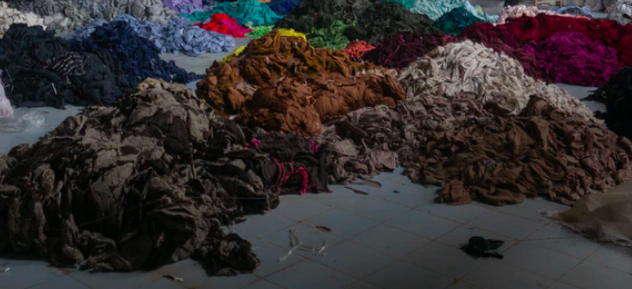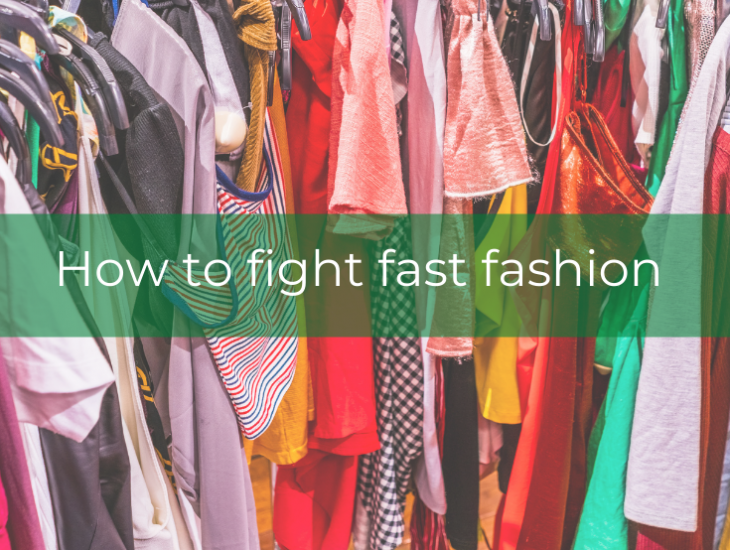The best ways to make your wardrobe more sustainable
Fashion manufacturing has changed exponentially in the past century. The advent of mass production and the invention of synthetic fibres around 100 years ago, has led to clothing being made cheaply, more rapidly and ultimately becoming a disposable commodity. The negative impacts of fast fashion both morally and environmentally are beginning to come to the forefront, and consumers desire to shop more consciously is starting to make the fashion industry reconsider its wasteful ways.
What is fast fashion?
The term fast fashion describes a business model based around replicating fashion designs as cheaper, poor quality and disposable versions. It is exploitive and highly profitable as these designs are mass produced at a low cost. Around 80 billion of these garments are bought around the world each year with the UK being the epicentre of fast fashion in Europe. Furthermore, the growth of online shopping has led to an enormous increase in fast fashion items being produced and sold and the numbers continue to grow.

But why exactly is fast fashion such a huge problem?
If you’re still wondering what’s so bad about cheap fashion, you are not alone. But the problems of the fast fashion industry go way beyond the exploitation of fashion designers’ work; the production of these items are extremely harmful to humans, animals and the planet and plays a huge part in pollution and carbon emissions.

Source: Accumulation of Microplastic on Shorelines Woldwide: Sources and Sinks
Polyester, acrylic and Nylon are the most commonly used material in fast fashion clothing. These materials consist of plastic fibres. Every time these clothing items are washed, 700,000 microfibers are released into waterways which eventually end up in our oceans. These toxic fibres are consumed by fish which are then eaten by us. Further exposing us to certain chemicals found in plastics which when ingested, even small amounts can lead to serious health problems.

The production of polyester and nylon clothing leaves behind toxic wastewater containing substances like lead and mercury which again ends up in oceans and are extremely harmful to marine and human life. Over half of the world’s population are at risk of water scarcity at some point as the amount of clean water available for everyone decreases.
Fast fashion is also often synonymous with poor labour conditions – endless working hours, below living wage pay, and hazardous environments. Most of our clothes are made in countries where workers rights are non-existent and the fast fashion industry abuses the rights of people who have no other choice but to work for low salaries.

Clean Clothes campaign, 2018
A growth in consumption leads to a growth in waste. Fast fashion is designed to be disposable making it almost as bad as single use plastic items. Over 300,000 tonnes of used clothing are burned or buried in landfill each year and can take over 200 years to decompose.
What can you do to help fight fast fashion?
Thankfully, the tide does seem to be turning when it comes to fast fashion, with more shoppers than ever before being more conscious and selective of their clothing purchases.

Survey: Consumer sentiment on sustainability in fashion, 2020
This is positive news, but what exactly is sustainable fashion and what can you do to curate a more sustainable wardrobe? London College of Fashion’s Professor Kate Fletcher explains it as “fashion within planetary limits”, by reducing the demand for fast fashion clothing items, you can help reduce the negative impact it has on the planet. Consider the following aspects:
Buying less and investing more in high quality staple pieces– it is important to base your wardrobe around staple pieces that will never go out of style to avoid constantly buying new clothes.
Being conscious about your needs and wants and only buying items you need – We all tend to go online shopping when we’re bored and have some extra money on our hands, but before buying an item of clothing, think about if you really need it or if you own something similar that you can create a new outfit with. You don’t always need to buy a new outfit for every new occasion.
Buying second hand or trading clothes with friends – If you and a friend share the same style and have clothes you don’t wear any more, why not ask them to trade? Alternatively, you could buy from or give old clothes to charity shops. Doing this prevents more waste as it helps give old clothing items a new home.
Opting for organic and reusable materials – avoid clothing that includes polyester, nylon or acrylic. Natural fabrics such as silk, cotton, Bamboo, Merino Wool and Linen waste less resources and involve no chemicals. They are sustainable in how they are grown and processed and are biodegradable. These fabrics also provide personal benefits such as being lightweight, comfortable, breathable, hypoallergenic and kind to skin, and give you the peace of mind knowing that you are contributing to saving the planet.

Only buying from companies whose values you support
Check and make sure that you support the company’s values and that they are truly sustainable. Buying from slow fashion brands means that you are supporting a more sustainable way of clothing production which wastes less and avoids any harm to humans, animals and the environment. These companies also ensure that profits are distributed fairly and that workers receive at least minimum wage with good working conditions.

(Left to right) Bamboo Dress with V-notch Neckline, Organic Cotton Embroidered Shirt, Pure Tencel Waterproof Parka
At Patra, we pride ourselves on creating styles that last using the best quality natural fabrics sourced and hand selected with the utmost care. They are more sustainable and will save you money in the long run. We focus on creating beautiful items that are designed to truly fit and flatter. It is the heart of what we do. Our aim is to help you enjoy shopping with a clear conscience, by choosing slow fashion that respects the planet and your body.

